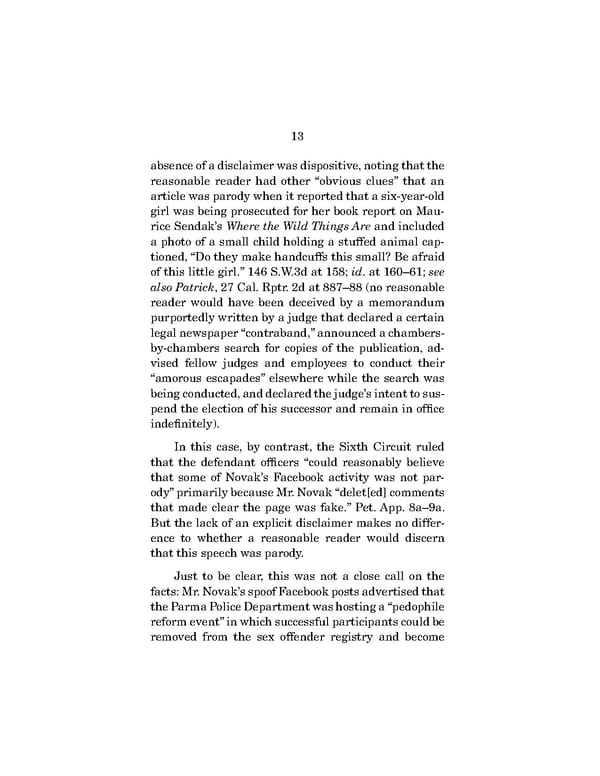13 absence of a disclaimer was dispositive, noting that the reasonable reader had other “obvious clues” that an article was parody when it reported that a six-year-old girl was being prosecuted for her book report on Mau- rice Sendak’s Where the Wild Things Are and included a photo of a small child holding a stuffed animal cap- tioned, “Do they make handcuffs this small? Be afraid of this little girl.” 146 S.W.3d at 158; id. at 160–61; see also Patrick, 27 Cal. Rptr. 2d at 887–88 (no reasonable reader would have been deceived by a memorandum purportedly written by a judge that declared a certain legal newspaper “contraband,” announced a chambers- by-chambers search for copies of the publication, ad- vised fellow judges and employees to conduct their “amorous escapades” elsewhere while the search was being conducted, and declared the judge’s intent to sus- pend the election of his successor and remain in office indefinitely). In this case, by contrast, the Sixth Circuit ruled that the defendant officers “could reasonably believe that some of Novak’s Facebook activity was not par- ody” primarily because Mr. Novak “delet[ed] comments that made clear the page was fake.” Pet. App. 8a–9a. But the lack of an explicit disclaimer makes no differ- ence to whether a reasonable reader would discern that this speech was parody. Just to be clear, this was not a close call on the facts: Mr. Novak’s spoof Facebook posts advertised that the Parma Police Department was hosting a “pedophile reform event” in which successful participants could be removed from the sex offender registry and become
 Onion - Legal Case for Parody Page 17 Page 19
Onion - Legal Case for Parody Page 17 Page 19